Origins of Kura Kura: A Vision Unveiled
Foundations of Creativity at Rumah Hujan Estate
The genesis of Kura Kura, the exceptional badminton courts, took root within the visionary landscape of Rumah Hujan Estate. Conceived as part of a broader real estate venture by Studio Jencquel, the endeavor unfolded on a parcel of land adjacent to the street. Initially lying dormant, this space became the canvas for an architectural innovation that aimed to serve both functional and aesthetic purposes.
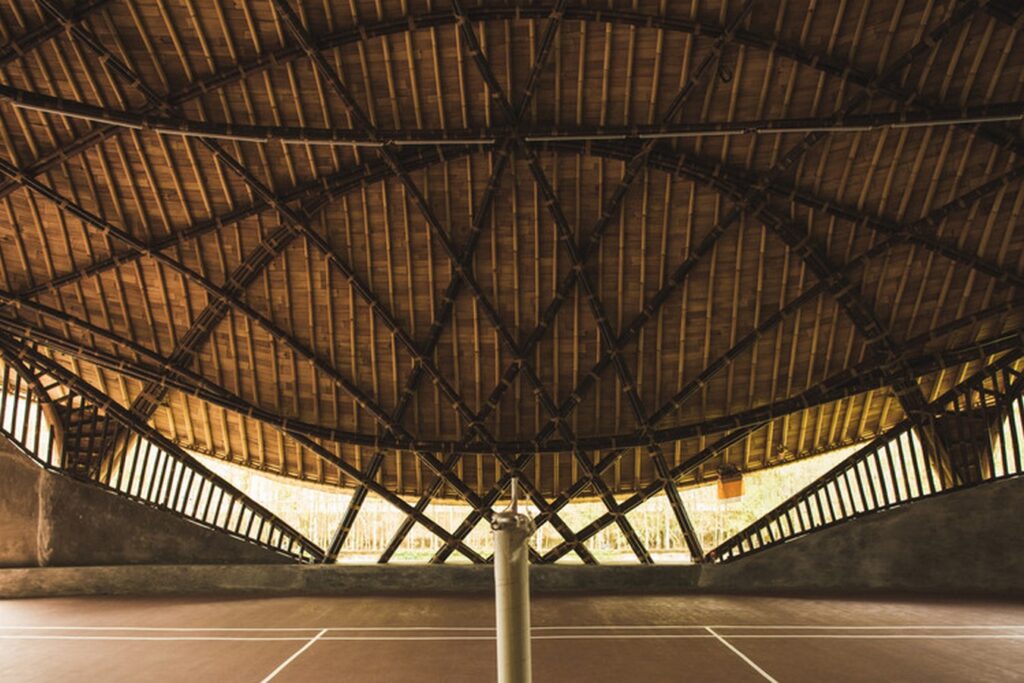
Maximizing Limited Space with Purpose
Studio Jencquel, faced with limited space unsuitable for a tennis court, pivoted to the idea of crafting a badminton court. Given the sport’s paramount status in Indonesia, where it is an integral part of school education and boasts a fiercely competitive professional scene, this choice resonated with the local culture. The challenge lay in creating a professional court, a realm Maximillian Jencquel delved into with meticulous research, given his unfamiliarity with the sport.
Designing a Structure in Harmony with Sport
The Artistry of Shuttlecock Trajectory
An essential consideration in badminton court design is the trajectory of the shuttlecock. Its flight path, inherently parabolic, demanded a minimum height clearance of 9m. Confronted with the prospect of an intrusive, towering structure, Maximillian Jencquel sought an organic solution. Embracing the shuttlecock’s flight trajectory, the design evolved with graceful and bold curves, steering clear of the conventional tall-box structure.
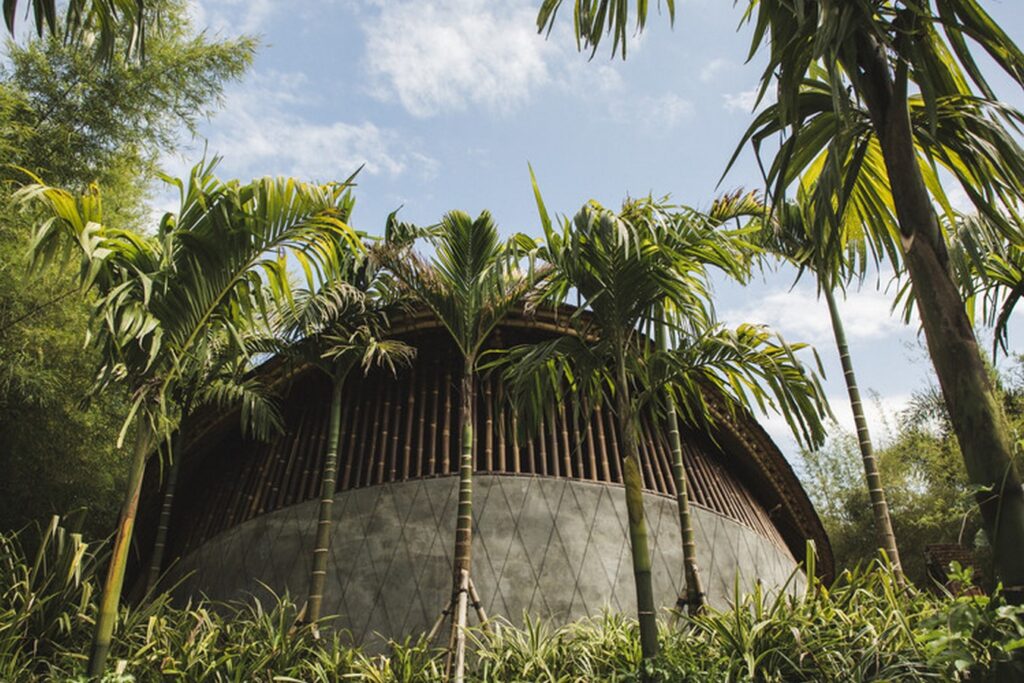
Bamboo: A Natural, Budget-Friendly Choice
In the pursuit of an environmentally conscious, budget-friendly, and regionally suitable material, bamboo emerged as the natural choice. The collaboration with IBUKU, specifically Elora Hardy, brought forth the expertise needed to translate this vision into reality. IBUKU’s design prowess contributed to the creation of the distinctive structure, seamlessly blending the contrasting tones of black and blond bamboo.
Collaborative Decision-Making for Optimal Design
The collaboration between IBUKU and Studio Jencquel extended beyond the choice of bamboo. Studio Jencquel actively participated in crucial decisions, including the strategic extension of rooflines. This design choice not only added a distinctive aesthetic touch but also served a functional purpose. It acted as a barrier against dominant winds, ensuring a comfortable internal environment while facilitating essential air circulation to dissipate internal heat.
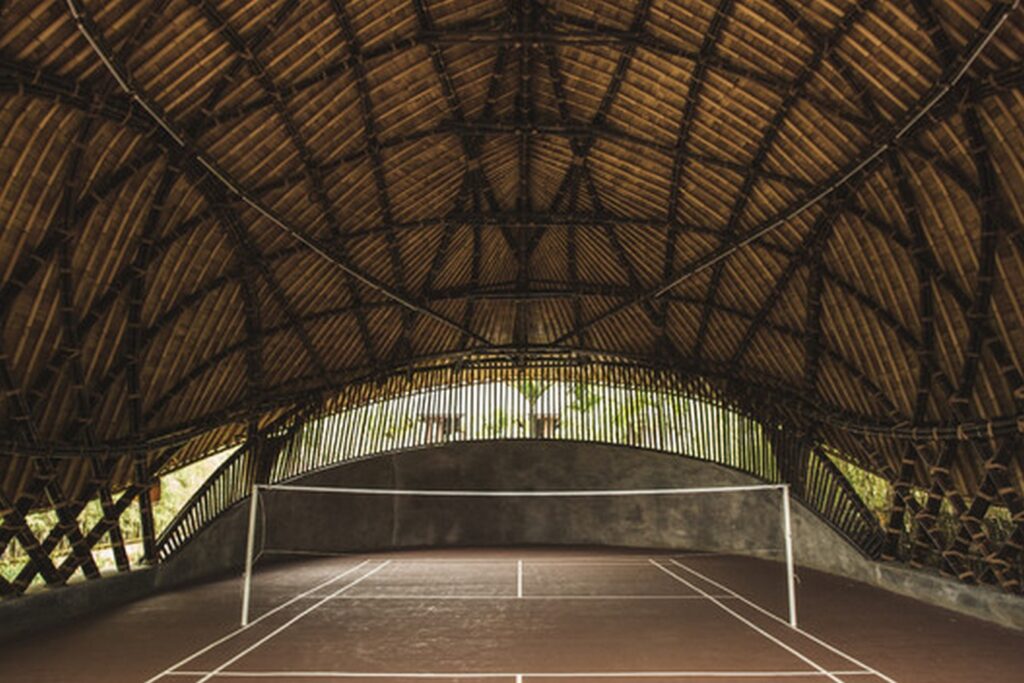
Conclusion: Where Form Meets Function in Sporting Harmony
Kura Kura Badminton Courts stand as a testament to the symbiosis between architectural innovation and functional necessity. The collaboration between IBUKU and Studio Jencquel has given rise to a sporting haven that not only embraces the cultural significance of badminton in Indonesia but also exemplifies sustainable design through the use of bamboo. Beyond its sporting utility, Kura Kura is a visual delight, seamlessly integrating with its surroundings and embodying the spirit of thoughtful architectural design.


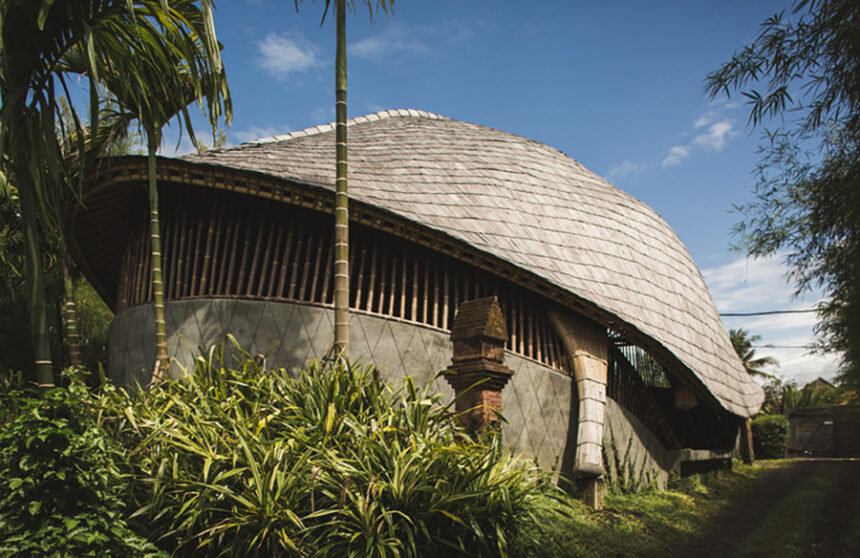
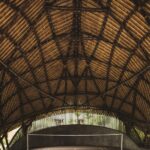

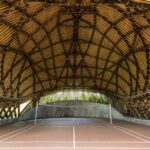
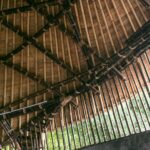
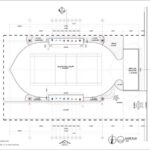
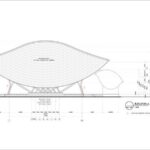
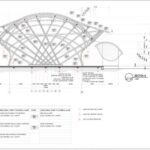
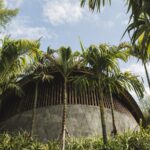
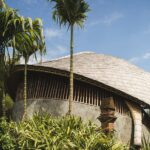
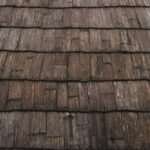
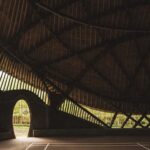
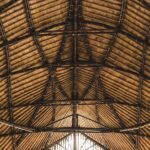
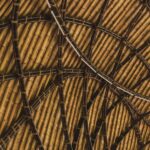
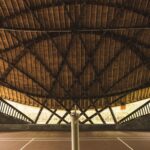
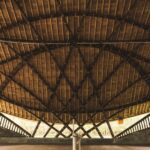
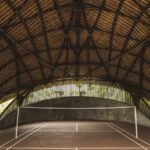
Leave a Reply